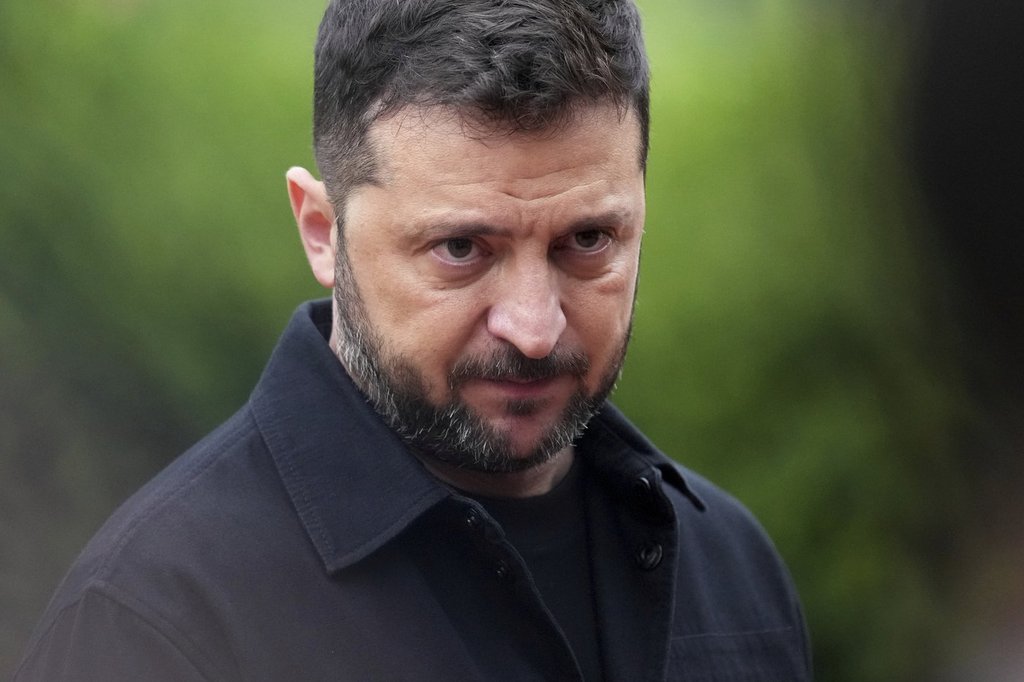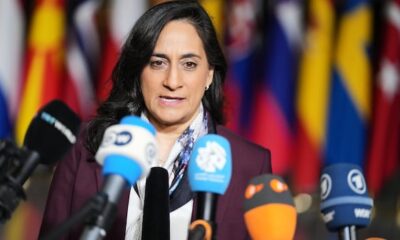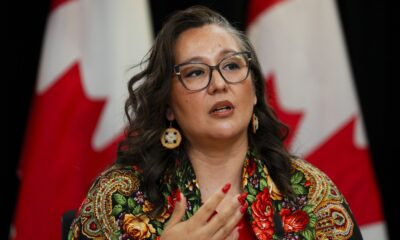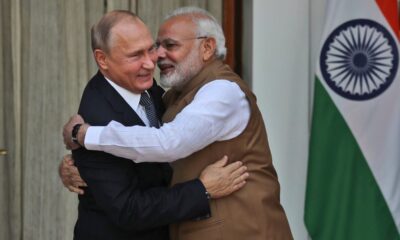World
Russia Launches Major Drone and Missile Assault on Ukraine

Russia executed one of its most substantial aerial assaults on Ukraine this year, launching 574 drones and 40 missiles overnight, according to the Ukrainian Air Force. The attack, which occurred on March 15, 2024, resulted in the death of at least one individual and left 15 others injured, officials reported.
The strikes predominantly targeted western regions of Ukraine, far removed from the ongoing front lines in the east and south. Notably, Andrii Sybiha, Ukraine’s Foreign Minister, indicated that the attack hit a “major American electronics manufacturer” in the west, although he did not provide specific details about the incident. This area is crucial for military logistics, as much of the military aid from Ukraine’s Western allies is believed to be transported and stored there.
Attack Amidst Diplomatic Efforts
This incident marks Russia’s third largest aerial attack of the year in terms of drone deployments, and its eighth largest regarding missile usage. The strikes coincided with renewed diplomatic efforts led by the United States to negotiate a peace settlement in the ongoing conflict, which has persisted since Russia’s invasion of Ukraine.
Ukrainian President Volodymyr Zelenskyy condemned the assault, stating that it was executed “as if nothing were changing at all.” He highlighted that Moscow has yet to indicate any genuine interest in pursuing meaningful negotiations to conclude the war, urging the international community to respond with stronger measures, including additional sanctions.
“Russia wasted several cruise missiles against an American business,” Zelenskyy remarked, emphasizing the civilian nature of the target.
In light of the attack, Zelenskyy announced that Ukraine would engage in intensive discussions to clarify the security guarantees its allies are prepared to offer. He expressed optimism following indications that the United States might support renewed discussions aimed at resolving the conflict. The Ukrainian leader anticipates that clearer security arrangements will emerge within the next seven to ten days, potentially paving the way for direct talks with Russian President Vladimir Putin for the first time since the full-scale invasion.
International Responses and Future Meetings
Zelenskyy indicated a desire for a trilateral meeting involving U.S. President Donald Trump, suggesting that discussions might be held in a format similar to NATO’s Article 5, which establishes a common defense guarantee among member states. He also mentioned Switzerland, Austria, and Turkey as possible venues for these meetings.
Despite the expressed commitment from a coalition of over 30 countries to contribute to Ukraine’s security guarantees, negotiations have stalled, particularly due to ambiguity surrounding the U.S. role in these efforts. Russian Foreign Minister Sergey Lavrov dismissed the idea of establishing security arrangements in Ukraine without Moscow’s involvement, as reported by state news agency RIA Novosti.
Recent comments from Trump have rekindled hope for U.S. support for “Article 5-like” security guarantees, which could further invigorate discussions. Zelenskyy noted that Turkey has shown readiness to bolster security along the Black Sea, contingent on U.S. backing.
As Ukraine continues to seek clarity regarding its expected support from allies, Zelenskyy reiterated the country’s openness to direct negotiations with Russia. He emphasized the need for a robust reaction from the United States should Russia remain uncooperative in pursuing peace.
In the wake of the recent attacks, Zelenskyy remains focused on ensuring that Ukraine is adequately supported in its ongoing efforts to maintain sovereignty and security amidst a challenging geopolitical landscape.
-

 Politics4 weeks ago
Politics4 weeks agoSecwepemc First Nation Seeks Aboriginal Title Over Kamloops Area
-

 World5 months ago
World5 months agoScientists Unearth Ancient Antarctic Ice to Unlock Climate Secrets
-

 Entertainment5 months ago
Entertainment5 months agoTrump and McCormick to Announce $70 Billion Energy Investments
-

 Science5 months ago
Science5 months agoFour Astronauts Return to Earth After International Space Station Mission
-

 Lifestyle5 months ago
Lifestyle5 months agoTransLink Launches Food Truck Program to Boost Revenue in Vancouver
-

 Technology3 months ago
Technology3 months agoApple Notes Enhances Functionality with Markdown Support in macOS 26
-

 Lifestyle3 months ago
Lifestyle3 months agoManitoba’s Burger Champion Shines Again Amid Dining Innovations
-

 Top Stories2 months ago
Top Stories2 months agoUrgent Update: Fatal Crash on Highway 99 Claims Life of Pitt Meadows Man
-

 Politics4 months ago
Politics4 months agoUkrainian Tennis Star Elina Svitolina Faces Death Threats Online
-

 Sports5 months ago
Sports5 months agoSearch Underway for Missing Hunter Amid Hokkaido Bear Emergency
-

 Politics5 months ago
Politics5 months agoCarney Engages First Nations Leaders at Development Law Summit
-

 Technology5 months ago
Technology5 months agoFrosthaven Launches Early Access on July 31, 2025





















